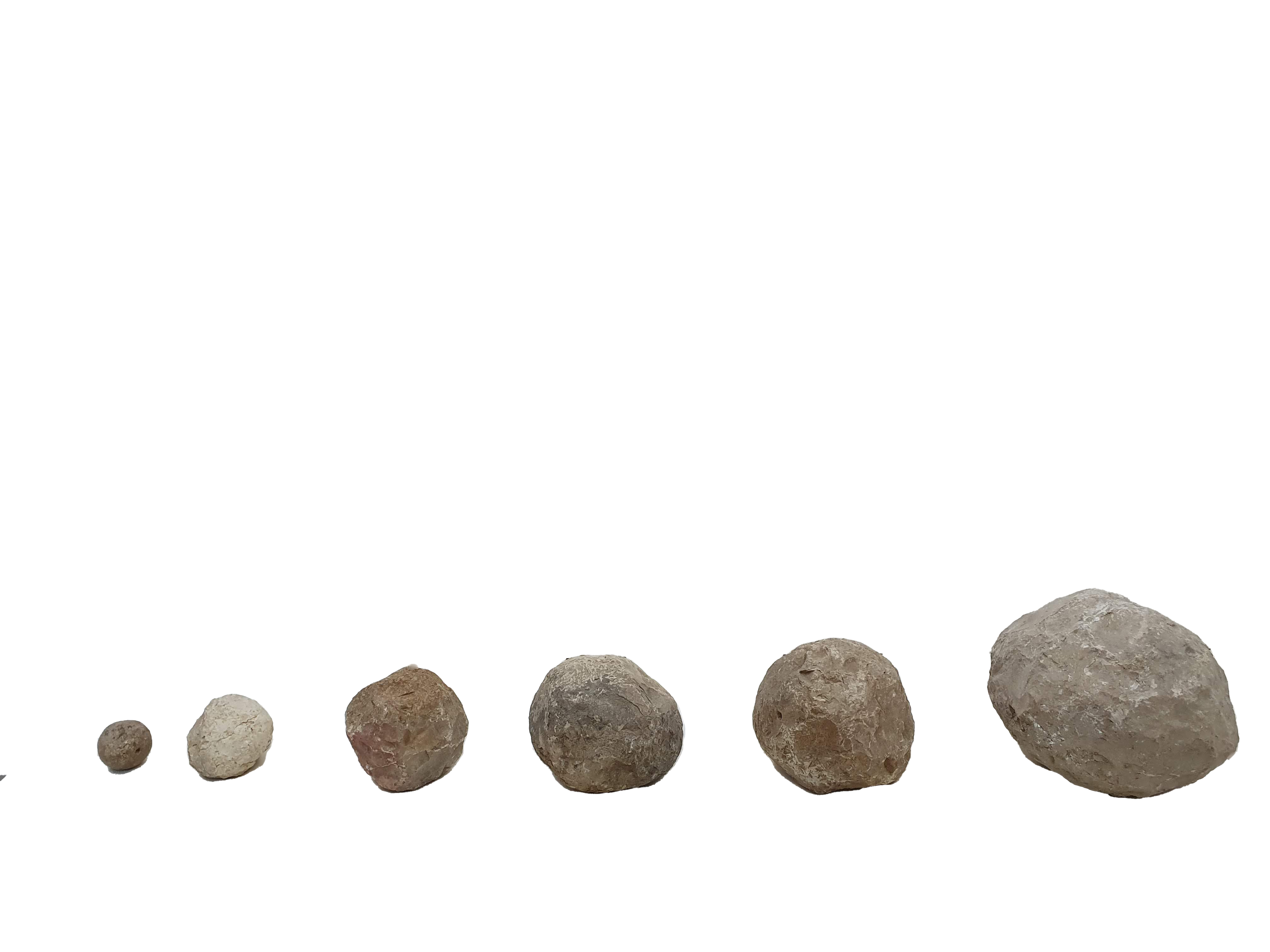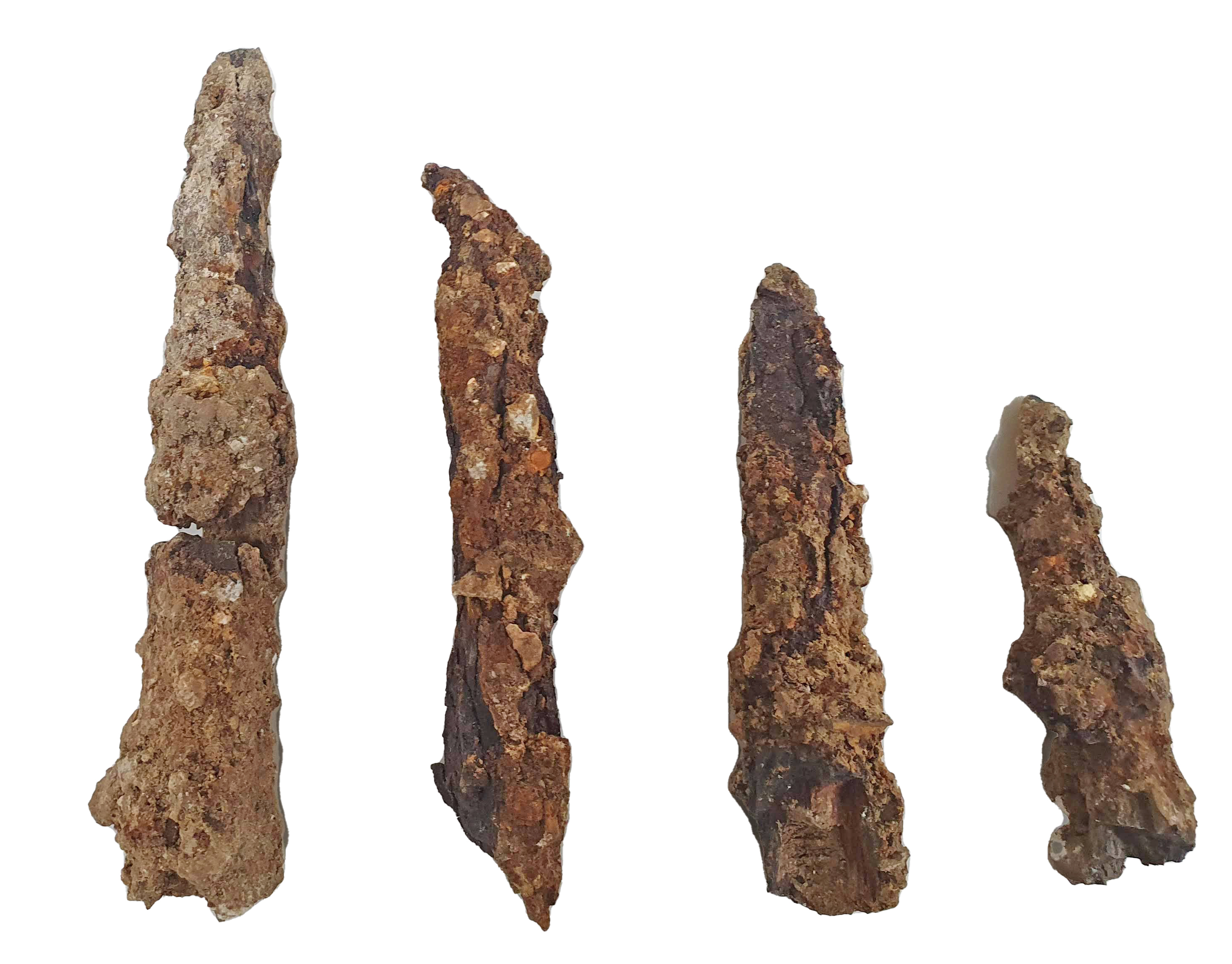Roman military equipment used in battles that led to destruction of Second Temple revealed on Tisha B’Av
Findings announced on Sunday revealed the might of the Roman army and a stockpile of ballista stones in Jerusalem

The Israel Antiquities Authority on Sunday presented the results of a new research project about the power of the Roman army in the battles that led to the destruction of the Second Temple, one the tragedies in Jewish history that is mourned on Tisha B'Av on the Jewish calendar.
“The Fast of the Ninth of Av commemorates the day of the destruction of the Second Temple,“ IAA researcher Kfir Arbiv said. “The day of that destruction is the Ninth of Av ... and is commemorated by Jews as a day of fasting and obligatory mourning.“
“The Temple was destroyed in 70 [A.D.], after a four-month siege and an intensive battle led by the Roman General Titus, in order to conquer the city and suppress the revolt initiated by the Jews four years earlier,” Arbiv said. “The Romans had a well-trained, massive army, equipped with the best military innovations of their day. It was a ruthless war machine.”
Tisha B'Av (the Ninth of Av), which fell on Sunday this year, is marked by the Jewish people with fasting and mourning in memory of the fall of Jerusalem, the destruction of both the First and Second Temples and other catastrophes through the centuries.
This particular research project involved the excavation and documentation of Roman military equipment used in the battle against Jerusalem.
Arbiv’s research focused especially on the hundreds of different-sized ballista stones that would be launched from sophisticated bolt-throwing machines, to a distance of 100–400 meters; in addition to small sling stones used by trained infantry and catapult machines that launched spearheads over a distance of 150–200 meters.

According to the findings, some of the ballista stones were launched against the walls to prevent Jewish rebels from climbing them, while other heavier stones were hurled against the walls to penetrate them.
“We know from the historical sources that the Roman army employed massive siege rams to batter the fortification walls and siege towers that reached the height of the walls, but these have not yet been found in Jerusalem,” said Amit Re’em, director of the IAA Jerusalem region.
According to Arbiv, “With the help of the computer, I located all the ballista exactly where they were found. I took into account the local topography and the location of the Second Temple-period city fortification walls, and I made ballistic calculations, including the launching angle, and the throwing distance of the stones.”
“All the data was compared to the renowned Jewish historian Josephus’ contemporary detailed descriptions of the battle, and the conquest and destruction of Jerusalem, in his book, ‘The History of the Jewish War against the Romans,’” Arbiv said.

The IAA research showed that “an exceptionally large concentration” of ballista stones was found in the excavations at the 17-acre Russian Compound in Jerusalem, where parts of the Josephus-described “Third Wall,” the third line of defense that surrounded the city, have been uncovered, as well.
“It was evident that the Roman army concentrated their efforts here and hundreds, if not thousands, of ballista stones, were directed to this spot,” the research showed.
“This is not surprising, as whoever controls this spot, dominates the whole area and the fate of the city,” Arbiv said. “This aligns with Josephus’ account that Titus commanded to penetrate the city from the northwestern side of the city wall.”
IAA Director Eli Eskosido noted that the destruction of the Second Temple was preceded by “extremely harsh battles” between the Romans and the Jewish rebels.
“The physical evidence of the huge resources employed by the Roman army in Jerusalem reflects the extremely harsh battles that eventually led to the destruction of the Second Temple,” Eskosido told The Jerusalem Post. “Notwithstanding the internal factions and the impossible odds, a small group of Jewish defenders withheld the Romans for a few months until the tragic destruction of the city. The use of up-to-date research methods reveal more and more on the fascinating history of Jerusalem.”

The All Israel News Staff is a team of journalists in Israel.












